Politics
Nepal ex-chief justice tipped to lead political transition
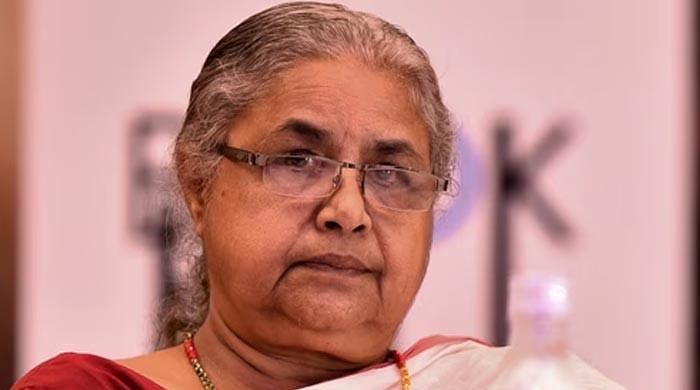

- Nepal protesters back ex-chief justice Sushila Karki as leader.
- Army chief meets Gen Z protesters to discuss interim govt plan.
- Streets in Kathmandu quiet as soldiers keep patrols, checkpoints.
Nepal’s former chief justice Sushila Karki is the leading choice to be interim leader, a representative of the “Gen Z” protesters said Thursday, after demonstrations that ousted the veteran prime minister.
Army chief General Ashok Raj Sigdel held “consultations with related stakeholders and held a meeting with representatives of Gen Z” on Wednesday, a military spokesperson said, referring to the loose umbrella title of the protest movement, without giving further details.
The army is seeking to restore order in the Himalayan nation of 30 million people, after the worst violence in two decades ousted the prime minister and left the parliament ablaze on Tuesday.
“Right now, Sushila Karki’s name is coming up to lead the interim government — we are now waiting for the president to make a move,” said Rakshya Bam, who was among those attending the meeting.
“We discussed with the army chief about the future,” she told AFP.
“The conversation was about how we can move forward, keeping the peace and security of the country.”
Karki, 73, an academic and Nepal’s first female Supreme Court chief justice, has told AFP that “experts need to come together to figure out the way forward”, and that “the parliament still stands”.
But others warned the choice of the protesters — who are not one single party — was far from unanimous.
In a virtual meeting attended by thousands on the online social platform Discord, young people discussed their varied agendas — and debated who should represent them.
There were conflicting arguments and several names proposed.
“There are divisions,” journalist Pranaya Rana said. “It is natural in a decentralised movement like this that there are going to be competing interests and competing voices.”
Soldiers patrolled the streets of the capital for a second day on Thursday, which appeared to be quiet, with multiple army checkpoints set up along the streets.
Demonstrations began on Monday in Kathmandu against the government’s ban on social media and over corruption.
But they escalated into an outpouring of rage nationwide, with government buildings set on fire after at least 19 people were killed in a deadly crackdown.
Politics
Hurricane Melissa’s death toll climbs to 44, storm churns north
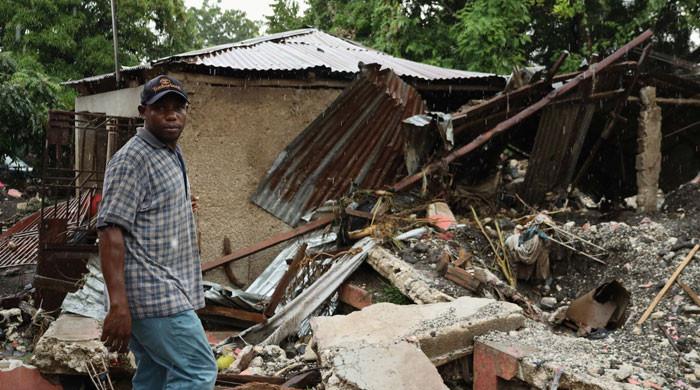
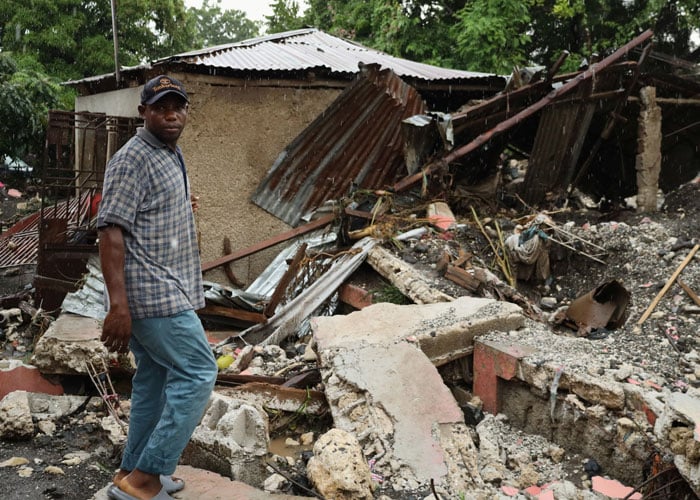
- At least 25 confirmed dead in Haiti, 19 in Jamaica.
- Forecaster estimates up to $52 billion in damages.
- Melissa among strongest-ever storms at landfall.
PORT-AU-PRINCE/KINGSTON/HAVANA: Hurricane Melissa’s confirmed death toll climbed to 44 on Thursday, according to official reports, after wreaking destruction across much of the northern Caribbean and picking up speed as it headed toward Bermuda.
Jamaica’s information minister told Reuters at least 19 deaths had been confirmed, but authorities were continuing search and rescue efforts. The storm left hundreds of thousands without power, ripped roofs of buildings and scattered fields with rubble.
Jamaica’s military has called on reserve personnel to report for duty to help with relief and rescue operations.
Melissa made landfall in southwestern Jamaica on Tuesday as a powerful Category 5 hurricane, the Caribbean nation’s strongest-ever storm to directly hit its shores, and the first major hurricane to do so since 1988.
Windspeeds were well above the minimum level for the strongest hurricane classification. Forecasters at AccuWeather said it tied in second place for strongest-ever Atlantic hurricane on record in terms of windspeed when in struck land.
The forecaster estimated $48 billion to $52 billion in damage and economic loss across the western Caribbean.
Authorities in Haiti, which was not directly hit but nevertheless suffered days of torrential rains from the slow-moving storm, reported at least 25 deaths, mostly in the southern town of Petit-Goave when a river burst its banks.
A river also caved in and carried off part of a national highway, local newspaper Le Nouvelliste reported. The road, which had been weakened by last year’s Hurricane Beryl, connected to the nearby city of Jacmel.
Melissa also hit eastern Cuba, where some 735,000 evacuated, but as of Thursday, no deaths were reported there, despite extensive damage to homes and crops.
At 8pm (0000 GMT), Melissa was a Category 1 storm 409 km (254 miles) south-west of the North Atlantic British island territory, where hurricane conditions were expected by nightfall even as Melissa’s eye skirts north-west.
Melissa was packing maximum sustained winds of 105 mph (169 kph).
Residents in Bermuda however remained calm as the storm was expected to give the island a relatively wide berth. Authorities said they would close its causeway Thursday night and shut schools and ferries on Friday “out of an abundance of caution.”
In the Bahamas, which Melissa cut through Wednesday night, authorities lifted storm warnings but did not give the “all clear”. An official said authorities expected to decide by Saturday whether it was safe for the hundreds of people who evacuated off affected islands to return to their homes.
Wading barefoot through mud
The front page of Thursday’s Jamaica Observer newspaper read: “DEVASTATION.”
Densely populated Kingston was spared the worst damage. Its main airport was set to reopen on Thursday, as was the capital’s port. Relief flights and aid had begun to flow into Jamaica’s airports, authorities said.
But across the country, more than 130 roads remained blocked by trees, debris and electric lines, authorities said, forcing the military to clear roadways on foot into isolated areas, with ambulances following close behind.
Satellite imagery showed swaths of trees and homes devastated in the hardest-hit areas of Jamaica, sparse remaining greenery defoliated and most structures destroyed.
In a neighbourhood of the island’s Montego Bay, 77-year-old Alfred Hines waded barefoot through thick mud and debris as he described his narrow escape from the rising floodwaters.
“At one stage, I see the water at my waist and (after) about 10 minutes time, I see it around my neck here and I make my escape,” he told Reuters on Wednesday.
“I just want to forget it and things come back to normal.”
In western parts of the island, people crowded by supermarkets and gas stations to fill up on supplies.
“Montego Bay hasn’t got any petrol. Most of the petrol stations are down,” British tourist Chevelle Fitzgerald told Reuters, adding it took her at least six hours to cross the 174 km (108 miles) to Jamaica’s capital.
“The highway was closed. You had some blockage on the road and trees falling down,” she said.
Over 70% of electrical customers in Jamaica remained without power as of Thursday morning, said Energy Minister Daryl Vaz, with power lines felled across the island’s roadways.
Many schools remained without power or water, officials in the capital Kingston said.
Immediate humanitarian aid
Scientists say hurricanes are intensifying faster with greater frequency as a result of warming ocean waters caused by greenhouse gas emissions. Many Caribbean leaders have called on wealthy, heavy-polluting nations to provide reparations in the form of aid or debt relief.
Despite the U.N. setting up a fund for developing nations to quickly access reliable financing for more extreme weather events in 2023, donations have not met targets.
U.S. forecaster AccuWeather said Melissa was the third most-intense hurricane observed in the Caribbean, as well as its slowest-moving, compounding damages for affected areas.
U.S. search and rescue teams were headed for Jamaica on Thursday to assist in recovery efforts, Jamaican authorities said. U.S. Secretary of State Marco Rubio said the U.S. was prepared to offer “immediate humanitarian aid” to the people of Cuba, a long-time U.S. foe.
Authorities in Cuba – which Melissa struck in the night as a Category 3 storm – said they were “awaiting clarification on how and in what way they are willing to assist.”
At least 241 Cuban communities remained isolated and without communications on Wednesday following the storm’s passage across Santiago province, according to preliminary media reports, affecting as many as 140,000 residents.
Residents of Santiago, Cuba’s second-largest city, began returning to repair their homes. Authorities had evacuated 735,000 people to shelters outside the hurricane’s cone and relocated tourists in northern cays to inland hotels.
Politics
US grants India six-month sanctions waiver to run Iran’s Chabahar port, says New Delhi
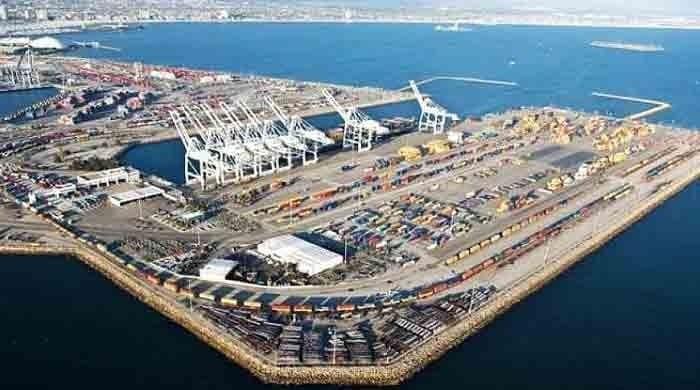
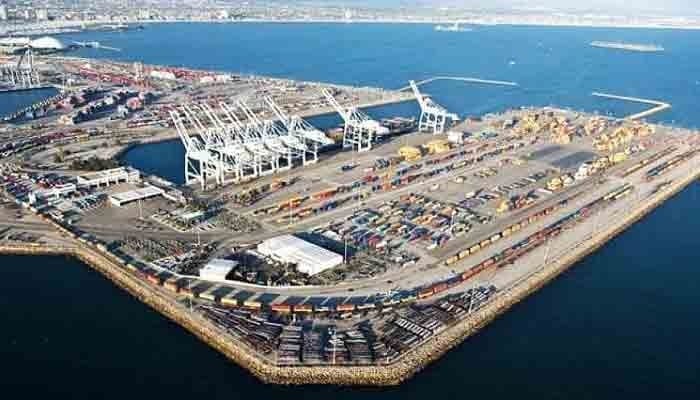
- India says exemption will boost regional trade connectivity.
- Indian refiners are now cutting Russian oil imports.
- Jaiswal says India continuing talks with Trump admin on trade deal.
The US has granted India a six-month sanctions waiver to operatethe Iranian port of Chabahar, India said on Thursday, boosting New Delhi’s effort to enhance trade with Afghanistan and Central Asian countries bypassing its rival Pakistan.
India signed a 10-year contract with Iran last year to develop and operate the port and this month stepped up its ties with Taliban-run Afghanistan by reopening its embassy in Kabul that was shut after the Islamist group seized power in 2021 following the withdrawal of US-led NATO forces.
The port on Iran’s southeastern Gulf of Oman coast was initially planned with a rail link to Afghanistan for building the landlocked country’s economy through trade and reducing Kabul’s dependence on the Pakistani port of Karachi.
The waiver move followed word by US President Donald Trump this week that he wanted to reach a trade deal with India – signalling a thaw in relations that soured to their lowest point in decades after he doubled tariffs on Indian imports to 50% as punishment for Indian purchases of Russian oil.
Indian refiners are now cutting Russian oil imports following Washington’s imposition last week of sanctions on Moscow’s top two crude exporters, Rosneft and Lukoil.
“I can confirm that we have been granted an exemption for a six-month period,” Indian foreign ministry spokesperson Randhir Jaiswal told a weekly news briefing, referring to the port.
He also said India was continuing talks with the Trump administration on a bilateral trade deal.
Washington had last month revoked the sanctions waiver for Chabahar, initially granted in 2018, as part of its effort to put “maximum pressure” on Iran to counter what it called the Islamic Republic’s destabilising activities in support of its nuclear and ballistic missile programmes.
An Indian official, speaking on condition of anonymity, said the US sanctions waiver had taken effect on Wednesday. The US embassy in New Delhi did not immediately respond to a request for comment.
Politics
’67’ crowned ‘Word of the Year’


A double-digit combination set the social media sphere ablaze among teens in 2025, leaving parents and teachers befuddled — and now it has officially been crowned Dictionary.com’s “Word of the Year”: 67.
But even the organisation that unveiled the winning word — pronounced “six-seven” and never “sixty-seven” — admitted it was not exactly sure about its meaning.
“You might be feeling a familiar vexation at the sight of these two formerly innocuous numerals,” Dictionary.com said, addressing parents as it announced the winner this week.
Members of Gen Alpha, it added, might be “smirking at the thought of adults once again struggling to make sense of your notoriously slippery slang.”
Dictionary.com said the origin of the word might be traced to “Doot Doot (6 7),” a song by the US rapper Skrilla.
Use of the word went viral in schools and on social media this year. It can be taken to mean a variety of things, with context, tone and absurdity all playing a role in determining its definition in the moment.
“67” beat out some stiff competition from other words that were short-listed for “Word of the Year.” These included “broligarchy,” “Gen Z stare,” and an entry from the world of emoticons — the dynamite emoji.
Its use exploded online with news of the engagement between pop superstar Taylor Swift and American football star Travis Kelce, as it was used as shorthand to refer to the “TNT” couple.
-

 Politics6 days ago
Politics6 days agoTrump slams ‘dirty’ Canada despite withdrawal of Reagan ad
-

 Tech1 week ago
Tech1 week agoTurning pollution into clean fuel with stable methane production from carbon dioxide
-

 Sports7 days ago
Sports7 days agoAlleged mob ties in NBA scandal recall La Cosa Nostra’s long shadow over sports
-

 Tech7 days ago
Tech7 days agoDefect passivation strategy sets new performance benchmark for Sb₂S₃ solar cells
-

 Business1 week ago
Business1 week agoJLR shutdown after cyber hack drives slump in UK car production
-

 Business1 week ago
Business1 week agoAssaults on rail network more than triple in 10 years
-

 Sports1 week ago
Sports1 week agoNBA legend Chauncey Billups, Heat’s Terry Rozier arrested as part of FBI gambling probe
-

 Sports1 week ago
Sports1 week agoPakistan, Saudi Arabia join hands to promote football development






